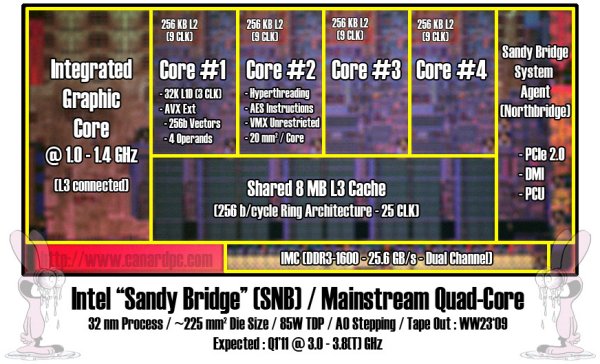According to the site, the new integrated graphics core of Intel's Sandy Bridge should be able to compete with 2011 entry-level graphics cards from ATI and NVIDIA, although that seems quite optimistic. The quad-core Sandy Bridge has a 85W TDP and measures around 225mm², with each core occupying around 20mm². Dual-core and eight-core Sandy Bridge processors will also be available, but details about those chips aren't available yet.
While we can not reveal to you some details of the architecture in the heart of Sandy Bridge, a few remain unknown. First, the Socket. According to the noises heard in corridors at a manufacturer of motherboard, the CPU should resume Socket 1156 of Clarkdale (generation "Westmere" above) but require a new chipset. Then, the performance of the integrated circuit graphics are all subject to speculation. We already know that the IGP Sandy Bridge will always be based on GMA and not on any variation of Larabee. With a frequency of approximately 1.2 GHz, this heart intended to be compatible with DirectX 11, should not be ridiculous but be a lightning war. Finally, the number of PCI Express link is still unknown. According to the first draft of the datasheet, this heart contain 20 lines PCI Express 2.0 (16x + 4x), but the information could not be confirmed ...
